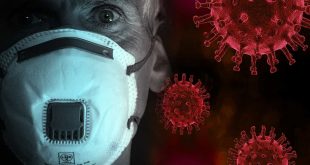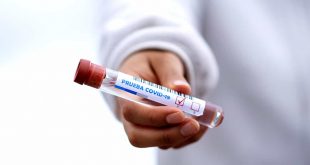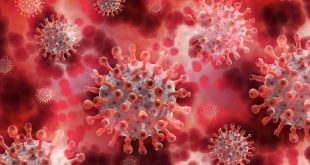Stay informed with the latest data on the number of COVID-19 cases.
While the numbers can tell you a lot about the coronavirus, the case numbers only tell part of the story.
Areas that test a high number of people will ultimately detect more cases than those that are not doing as much testing. There may also be surges in the number of cases when there are a high number of tests done in a short time frame.
The same is true for Canada’s provinces and territories. Different rates in testing and changes in how regions are recording results can result in higher numbers for some regions over others.
Canada
Total confirmed cases
Global
Total confirmed cases
Confirmed COVID-19 cases in Canada by province and territory
| Province/Territory | Cases | Deaths |
|---|
With data from CBC News
Skip chart of cumulative cases
Select a region to display:
With data from CBC News
Cumulative numbers show the total number of people that have tested positive for COVID-19 and give a sense of how far the epidemic has progressed. The chart excludes people who are infected but have not been tested (many provinces don’t allow all people with symptoms to be tested, and some infected people are asymptomatic) and those who are still awaiting test results, which can take days. That means the actual number of infections may be much larger.
The chart does include people who have recovered and are no longer infected. Note that sudden changes may reflect a change in the amount of testing or reporting rather than a change in the actual number of cases.
Skip chart of cumulative deaths
Select a region to display:
With data from CBC News
Because the number of reported cases depends on how much testing is done and how targeted or widespread it is, epidemiologists consider deaths to be a better gauge of the actual number of infections and the progress of the epidemic. While it takes a couple of weeks for an infected person to be reported as a positive case, death occurs, on average, more than three weeks after a person has been infected.
That means while deaths represent information that may be more accurate and precise, the figures are also more out of date than reported cases.
Skip chart of daily COVID-19 cases in Canada by province
Select a region to display:
With data from CBC News
Daily numbers give a sense of whether the number of new infections is growing and how quickly. When experts talk about using physical distancing to “flatten the curve” and keep the strain on the health-care system manageable, this is the curve they’re talking about.
However, there are a few days between each of the following: infection, the onset of symptoms, testing, and test results, meaning that the numbers typically reflect new infections a couple of weeks earlier.
Here, too, a sudden jump in numbers may reflect a change in who’s allowed to be tested, how many people are tested, and how they’re reported. For example, in Quebec, the government started reporting cases after one positive test instead of requiring further verification, resulting in a big jump in cases on March 23.
On May 3, Quebec’s daily increase includes 892 new cases and 1,317 cases from April that hadn’t yet been tabulated because of a technical problem. This accounts for a jump in both provincial and national cases on May 3.
Select a region to display:
With data from CBC News
Skip chart of tested people by region
With data from Public Health Canada
The number of nasal swab tests conducted in a province determines the number of novel coronavirus infections that can be detected. Per capita testing takes into account the population. It gives an idea of the relative proportion of cases in the province being detected: low per capita testing may mean a higher number of undetected cases.
However, provinces have different criteria for who can get tested. More targeted criteria may detect a greater number of cases with fewer tests.
Confirmed COVID-19 cases worldwide
With data from Johns Hopkins University
Frequently asked questions
Coronaviruses are a large family of viruses. They cause a range of illness ranging from the common cold to more severe diseases — such as Middle East Respiratory Syndrome (MERS-CoV) and Severe Acute Respiratory Syndrome (SARS-CoV).
Coronaviruses are zoonotic, meaning they originally pass from animals to humans. But some, like the current one, can also pass directly between humans.
Chinese scientists confirmed there has been human-to-human transmission of the virus among close contacts such as family members. It’s unclear how easily the virus is transmitted between people.
According to the Centers for Disease Control in the U.S., coronaviruses are most commonly spread by coughing or sneezing; close personal contact, such as shaking hands; or touching an object or surface with the virus on it and then touching your mouth, eyes or nose.
According to the World Health Organization, signs of infection can include respiratory complaints, fever, cough, shortness of breath and breathing difficulties. In more severe cases, infection can cause pneumonia, severe acute respiratory syndrome, kidney failure and even death.
The only way to confirm infection is with a lab test.
Fever, cough and shortness of breath can be symptoms of COVID-19, the disease caused by the novel coronavirus — but they’re also symptoms of seasonal flu and other respiratory illnesses that are common at this time of year.
Call your local public health unit if:
- You have even mild symptoms.
- You have been exposed to someone known to be infected.
If you have symptoms and are concerned for any other reason that you may have COVID-19, you can call public health, but you could also call your provincial or territorial telehealth service, or call your doctor to talk about your risk.
If you have been exposed to someone with COVID-19 and need immediate medical attention — for example, if you’re having difficulty breathing — go to your doctor or the emergency department, but call them or public health in advance so they can prepare and put infection control precautions in place.
You should self-isolate while waiting for test results. If you do test positive for COVID-19, you’ll need to be quarantined for 14 days.
It’s important to remember that the majority of people who get COVID-19 will only have mild to moderate symptoms, health experts say. For others, especially people who are elderly or have compromised immune systems, COVID-19 is life-threatening.
That’s why it’s critical that anyone with a cough, fever, shortness of breath — or anyone feeling unwell — stay home and not go to work until they are feeling better.
Here is a guide for what to do in your province or territory if you think you have COVID-19.
To prevent infection: Wash your hands often with soap and water for at least 20 seconds or use an alcohol-based hand sanitizer.
Avoid touching your eyes, nose and mouth.
Practice social distancing.
And stay home if you are sick.
Social distancing involves interacting with as few people as possible and trying to avoid getting too close (nearer than two metres) when you do.
Other social distancing measures, like working from home, school closures and cancelling sporting events, could help slow the rate of new infections.
People in self-isolation are asked to stay at home, unless absolutely necessary, such as to seek medical care. They should arrange to have groceries and supplies dropped off at the door.
Relatives and housemates can stay with you, however, health officials advise that any person in self-isolation should avoid contact with others — keeping a distance of at least two metres — and wear a mask that covers their nose and mouth. Frequent handwashing is critical. Officials also advise staying in separate rooms and using separate bathrooms if possible. If you live in a very small space, health officials advise that, if possible, people who are not infected stay elsewhere. It could take up to three weeks for the person who is ill to test negative for the virus.
Not outside of Canada.
The federal government has warned against all international travel and is limiting inbound flights as part of a series of measures to limit the spread of COVID-19.
Because the COVID-19 situation is changing daily, people also need to think beyond the actual risk of infection — because no matter where you travel, there’s still always a chance you could be told to go into quarantine as a precaution, whether by another country’s government or by your employer upon your return.
The Public Health Agency of Canada now recommends that healthy people wear a non-medical cloth mask (while still physically distancing from others) at the grocery store or pharmacy. That’s intended to reduce the chance that any droplets you sneeze or cough will come into contact with other people or surfaces. That could prevent asymptomatic or pre-symptomatic people from transmitting COVID-19 to others.
However, surgical or other medical masks should only be worn by people who are sick, their caregivers and health-care workers.
Medical N95 masks — specialized masks that block smaller particles — should only be worn by health-care workers. Both kinds of medical masks are in short supply and are important personal protective equipment for people who work in regular contact with COVID-19 patients.
That’s an area under study. It will likely be another month before experts are able to answer that question with confidence.
Right now, it’s not clear.
Unlike bacteria, viruses don’t continue to grow outside the body. But they do survive.
They usually survive on a surface longer if they’re surrounded by a bodily fluid, such as saliva.
But to infect you, the virus has to get from the surface inside your body — which means touching it and then putting your hand to your eyes, nose or mouth.
Contact with infected people, rather than objects, is likely more of a risk.
Note: The total number of Canadian cases, as well as the totals in each province and territory, are based on provincial and territorial government press conferences, as well as updates by provincial and territorial, local and regional public-health units and our own reporting.
Our numbers for Ontario will sometimes appear higher than those released by the government due to a lag in the provincial reporting system.
Canadian, provincial and territorial cumulative cases and daily new cases are also based on provincial and territorial government press conferences, as well as updates by provincial and territorial, local and regional public-health units and our own reporting. We are updating these numbers less frequently and therefore these numbers may be out of sync with the overall totals in the graph above.
World data is pulled from Johns Hopkins University and updated daily at 8 p.m. ET.
Data on testing for this page is updated from the Public Health Canada website daily.
Canadians who have died abroad are not included in totals for Canada or the provinces and territories.
 The Argus Report Read about it!
The Argus Report Read about it!




